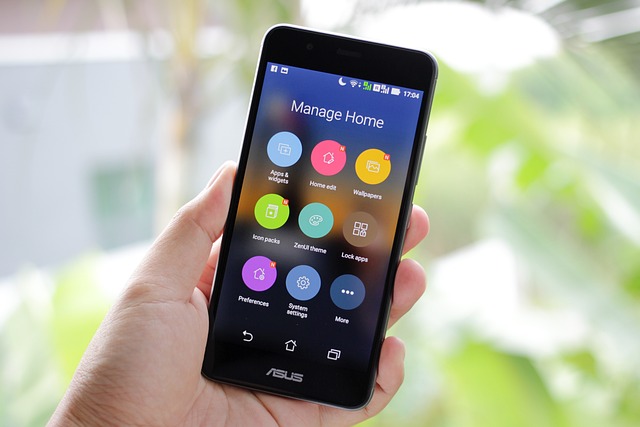Category: Mobile-Friendly Design
Mobile-Friendly Design: Revolutionizing Digital Experiences
Introduction
In an era dominated by mobile technology, ensuring digital content and interfaces are optimized for various devices has become imperative. This article delves into the concept of Mobile-Friendly Design, exploring its evolution, global impact, economic implications, technological innovations, regulatory landscape, challenges, and future prospects. By understanding these aspects, businesses, designers, and developers can create more inclusive and successful digital solutions tailored to the mobile user experience.
Understanding Mobile-Friendly Design
Definition and Core Components
Mobile-Friendly Design refers to the practice of crafting user interfaces (UIs) and user experiences (UXs) that are accessible, usable, and visually appealing on a variety of mobile devices, primarily smartphones and tablets. It involves adapting website and application design principles to accommodate the unique constraints of smaller screens, limited input methods (such as touch gestures), and varying network conditions.
The core components include:
- Responsive Design: Ensuring the layout adjusts fluidly based on screen size, orientation, and device type.
- Touch Optimization: Designing elements and interactions that are easily accessible and usable with fingers or styluses.
- Performance Optimization: Optimizing content loading times, images, scripts, and other resources to cater to slower mobile connections.
- Navigation Simplification: Creating intuitive navigation structures suitable for small screens, often employing hamburger menus, tabs, or bottom navigation bars.
- Accessibility: Making designs accessible to users with disabilities, including support for screen readers, alternative text for images, and color contrast considerations.
Historical Context and Significance
The concept of mobile-friendly design gained prominence in the mid-2000s as smartphone adoption surged. Prior to this, websites were primarily designed for desktop browsers, leading to poor user experiences on mobile devices. The introduction of iPhone and Android platforms set new standards for mobile hardware and software, driving the need for specialized design approaches.
Over time, the focus has shifted from simply making websites “work” on mobile to creating rich, engaging, and seamless user experiences that leverage the capabilities of these devices. Mobile-friendly design is no longer an optional consideration but a fundamental aspect of digital strategy, crucial for reaching a global audience and ensuring business success in today’s mobile-first world.
Global Impact and Trends
International Influence
Mobile-Friendly Design has had a profound impact worldwide, shaping the way people interact with digital content across borders. According to a 2021 report by Statista, over 5.7 billion mobile users worldwide, representing approximately 86% of the global population, accessed the internet via their smartphones in 2021. This widespread adoption has led to several key trends:
| Region | Mobile Penetration (%) | Average Time Spent on Mobile (daily) |
|---|---|---|
| North America | 93% | 246 minutes |
| Europe | 90% | 175 minutes |
| Asia Pacific | 95% | 268 minutes |
| Latin America | 78% | 127 minutes |
| Middle East & Africa | 71% | 134 minutes |
Regional Variations and Trends
- North America and Europe: These regions have seen early adoption of mobile technologies, resulting in highly sophisticated digital ecosystems. Designers here focus on creating immersive experiences with advanced animations, micro-interactions, and personalized content.
- Asia Pacific: With a high mobile penetration rate, Asia Pacific markets prioritize accessibility and simplicity. Designs often cater to diverse user needs, including support for multiple languages and characters.
- Latin America: Here, cost-effectiveness and network coverage are significant factors. Mobile apps tend to be lightweight, with a focus on core functionalities.
- Middle East & Africa: These regions exhibit growing mobile markets with increasing smartphone penetration. Designers are exploring innovative ways to engage users while addressing connectivity challenges.
Economic Considerations
Market Dynamics and Investment
Mobile-Friendly Design plays a pivotal role in shaping digital market dynamics and driving investment decisions:
- Increased User Engagement: Mobile-optimized sites and apps lead to higher engagement rates, reducing bounce rates and increasing time spent on platforms. This translates to more opportunities for monetization through advertising, subscriptions, or in-app purchases.
- Improved Conversion Rates: Well-designed mobile interfaces enhance the user journey, encouraging conversions (e.g., sales, sign-ups) and boosting business revenue.
- Competitive Advantage: In a crowded digital landscape, mobile-first strategies differentiate brands, attracting and retaining customers.
Investment Patterns
- Startup Focus: Many startups prioritize mobile development as their primary investment area, recognizing the potential for rapid user acquisition and growth.
- Enterprise Spending: Established enterprises allocate significant resources to mobile optimization, ensuring their digital offerings remain competitive.
- Global Opportunities: Emerging markets present attractive opportunities for mobile-focused businesses due to high smartphone penetration rates and growing internet usage.
Technological Advancements
Impact on Mobile Design
Technological advancements have significantly shaped the landscape of Mobile-Friendly Design, offering both challenges and opportunities:
| Advancement | Impact | Future Potential |
|---|---|---|
| 5G Networks | Faster data speeds, reducing loading times for content-heavy interfaces. | Enables real-time streaming, immersive AR/VR experiences on mobile devices. |
| Biometric Authentication | Enhances security with fingerprint, facial recognition, or iris scanning. | Potentially replaces traditional passwords, offering a seamless and secure login experience. |
| Progressive Web Apps (PWAs) | Combines web and app-like features for faster, more reliable performance. | Provides an app-like experience without the need for separate app downloads, improving user retention. |
| Voice User Interfaces (VUIs) | Facilitated by virtual assistants like Siri, Alexa, or Google Assistant. | Enables hands-free interaction, opening new possibilities for voice-controlled apps and interfaces. |
Navigation Best Practices
Simplifying Mobile Experiences
Effective navigation is crucial for creating successful mobile designs:
- Bottom Navigation Bars: Popular on Android devices, offering quick access to key sections of an app.
- Hamburger Menus (Three Lines): A compact way to hide and reveal extensive menus, common on iOS devices.
- Tab Bar Navigation: Used for apps with multiple screens or tabs, providing a visual representation of the content hierarchy.
- Gesture-Based Navigation: Swipe gestures allow users to navigate through content intuitively, reducing the need for complex menus.
- Simplified Hierarchies: Mobile menus should mirror user expectations, with clear and concise options. Complex structures can be adapted from desktop versions but should be optimized for small screens.
Performance Optimization Techniques
Enhancing User Experience
Performance optimization ensures that mobile users enjoy fast, responsive interfaces:
- Image Compression: Reducing image file sizes without compromising quality to speed up page loads.
- Lazy Loading: Delays loading images or content until it becomes visible in the user’s viewport, improving initial load times.
- Caching: Storing static assets locally on devices for quick access, reducing server load and network latency.
- Minification: Removing unnecessary characters (e.g., whitespace, comments) from code to reduce file sizes and improve loading speeds.
- Content Delivery Networks (CDNs): Distribute content across multiple servers globally, ensuring faster delivery to users regardless of their location.
Accessibility Considerations
Inclusive Design Practices
Making designs accessible is not only a moral imperative but also ensures wider user reach:
- Color Contrast: Ensure sufficient contrast between text and its background to aid users with visual impairments. Tools like WebAIM’s Contrast Checker can assist in meeting WCAG (Web Content Accessibility Guidelines) standards.
- Alternative Text for Images: Provide descriptive alternative text for images, enabling screen readers to convey their content to visually impaired users.
- Keyboard Navigation: Allow users to navigate through elements using a keyboard alone, benefiting those who cannot use a mouse or touchscreen.
- Text Resizing: Implement responsive design techniques that allow users to easily adjust font sizes for better readability.
- Captioning and Subtitling: For video content, provide captions and subtitles to make it accessible to users with hearing impairments.
Tools and Resources
Facilitating Mobile Design
A variety of tools and resources aid designers and developers in creating mobile-friendly experiences:
- Design Software: Figma, Sketch, Adobe XD, and InVision offer cloud-based collaboration tools for designing responsive interfaces.
- Responsive Testing Frameworks: Tools like Bootstrap and Foundation provide pre-built responsive components, simplifying the development process.
- Accessibility Testing Tools: Axe, Lighthouse, and WAVE help identify accessibility issues in web content.
- Mobile Emulation: Browsers like Google Chrome’s Developer Tools allow designers to simulate mobile environments for testing purposes.
- Analytics Platforms: Google Analytics, Mixpanel, and Firebase provide insights into user behavior on mobile devices, guiding design and optimization efforts.
Conclusion
Mobile-Friendly Design is a dynamic field that continues to evolve with technological advancements and changing user expectations. Designers and developers must stay informed about regional trends, investment patterns, and accessibility standards to create exceptional mobile experiences. By embracing best practices, leveraging available tools, and prioritizing user needs, professionals can ensure their digital offerings stand out in today’s highly competitive mobile landscape.
Mastering Mobile-Friendly Design: Essential Principles and Practices

Creating a successful Mobile-Friendly Design involves understanding and applying core principles tai…….








